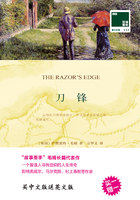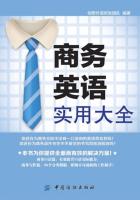This, of course, was unacceptable to the Chinese authorities, andwas regarded as an infringement of the sovereign right of China. In1904 Mr. A. E. Hippisley, acting for the Viceroy of Nanking, broughtforward a new proposal, designed to restore the control to China andto make use of the technical knowledge of the Marine Departmentof the Customs. The foreign contribution towards the work had beenestimated at Tls. 230,000 a year, derived from tax on land or houses inAt present, 1928, there are some nineteen Treaty Powers.
the Settlement, tax on land on both banks of the river, tax on importsand exports, and from tonnage dues. This arrangement was dropped,and China undertook to assume the entire expense and to contributeannually Tls. 460,000 to cover the cost, continuing the appropriationuntil the work was completed.
The work was to be under the direction of the Taotai of Shanghaiand the commissioner of Customs, who would employ competentengineers. Quarterly accounts of receipts and expenditures were tobe sent to the Consular Body in Shanghai. It took some time to getthe foreign Powers to agree to the new proposal, but in the end, onSeptember 27th, 1905, a set of twelve regulations, in accordance withthe new proposal, was signed by the representatives of China, and theeleven Protocol Powers.
Mr. J. de Rijke, a distinguished Dutch engineer, who had wideexperience of similar work in Holland and Japan, and who had madeconsiderable study of the Whangpoo problem, was appointed to thepost of Engineer-in-chief in January, 1906.
Jui Cheng, the Shanghai Taotai, and Mr. H. E. Hobson, Shanghaicommissioner of Customs, organized the work in an efficient manner,the secretarial staff being supplied by the Customs Service.
The work of improvement was carried on succes sfully and at theend of four years, the former junk channel, now known as the AstraeaChannel, had acquired a considerable depth, and the Inner WoosungBar had been practically eliminated.
Then difficulties arose owing to the fact that the sum appropriatedfor the work was almost exhausted, and there was no fund foradditional work and for maintenance. The Bard reported that a sum ofeight million dollars was necessary for the further improvements. TheChinese authorities were in a quandary, as they had expected the wholescheme to be carried out for the amount already appropriated.
They refused to renew the contract of Mr. de Rijke, which expiredin December, 1910, and engaged in his place a Swedish engineer, Mr.
H. M. von Heidenstam, and created in 1912 the present WhangpooConservancy Board. To the new Board was given the balance ofthe government grant. The Board was composed of the Chinesecommissioner of Trade and Foreign Affairs for Kiangsu, the Shanghaicommissioner of Customs (Mr. H. F. Merrill), the Shanghai Harbour-
Master (Captain W. A. Carlson), and three Chinese Governmentofficials.
Eventually, in order to secure sufficient revenue for the work, itwas agreed that instead of drawing a grant from the Government, theBoard should obtain its funds from “wharfage dues”at the rate of oneand a half per mille on the value of the goods, imported or exported.
Later it was further agreed that the Board should use the proceedsof the sale of sheng-ko land—land formed by “tidal accretion orreclamation, which by the law of China is crown land.“The Board"s jurisdiction extended over the Whangpoo from theYangtze to its tidal limit, that is to a radius of more than 30 miles. Itwas stated that “the authority with which the Conservancy Board isinvested is delegated to it by the Chinese Government.“ A consultativecommittee of five foreign and one Chinese member was appointed tosafeguard the interests of the Shanghai community.
In report No. 8 of the Whangpoo Conservancy Board, thefollowing statement is given of the work accomplished up to 1928.
“The improvement of a tidal river like the Whangpoo followscertain simple principles. To obtain a deep regular channel suitableAccording to a statement in Whangpoo Conservancy Board General Series No. 8
at the present time the Board"s income consists “of a Conservancy Surtax of threeper cent. On the Shanghai Maritime Customs dues, one and a half per mille onduty free goods and 0.045 per cent. On treasure, and the proceeds from the sale offoreshore lands.“for navigation the width between the low water lines must be almostuniform, slightly expanding towards the mouth. The Conservancytherefore laid down Normal Lines within which the Channel must bekept. Those lines are about 1,400 feet apart at the upper end of theharbour, expanding to about 2,400 feet apart at the mouth…To guidethe water between these lines, training walls have been built in manyplaces, of various types, with piles, brushwood, mattresses, caissons,stone, etc., etc., and where the channel was split by islands or shoals,one of the two branches—the so-called ship channel—was closed byheavy dams, and the other one made into a first class waterway. Intwo places the river was too narrow and was widened to the normalwidth by dredging. Over 20,000,000 cubic yards of mud has beendredged…Very large areas have been reclaimed by thus narrowing thewhole channel with the result that the deep channel is wider and thetidal currents run unimpeded from the Yangtze through the smoothgently-curving course. At the points where the land bulges out into thewater the mud continues, however, to settle and at those places some1,000,000 cubic yards has to be dredged each year.
“Thus the river has been converted from an irregular and rapidlydeteriorating creek into a good shipway with a least navigable depth of26 feet at extraordinarily low water, except at the Wayside Bar, whichhas only 24 feet in the middle of the fairway.















